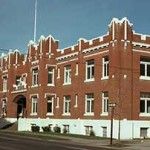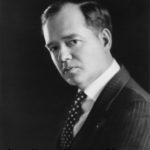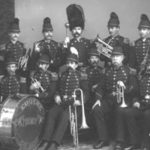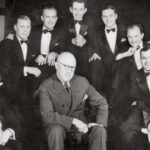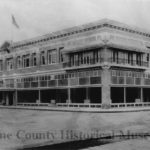The Eugene Armory, located in downtown Eugene on the northeast corner of 7th and Oak, was a popular music venue attracting both local and national acts. aka: the Eugene’s National Guard Armory or The Armory. Address: 125 E 7th St., Eugene, Oregon Building History The Armory was built in 1914 and designed by a notable local architect John Hunzicker (1867-1945), who … [Read more...]
Snapshot of Lane County in the 1910's
Local Influences
- 1910 Electric street car runs to Springfield and College Hill (as far as 29th)
- 1910 Population of Eugene 9009; creates housing shortage
- 1912 Eugene became “dry” town – folks forced to go outside of Eugene City limits to drink alcohol
- 1914 The Eugene chapter receives its charter from the American Federation of Musicians on Dec 16
- A woman who played the piano was considered more marriageable
National Influences
- 1910 The arrival of new immigrants pushed the U.S. population from 62,979,766 in 1890 to 92,228,496 in 1910. The huge growth drove musical instrument sales to new heights between 1890 and 1909. Higher wages led to a growing middle class who pursued music and other cultural refinements to enhance their social status
- 1911 Popular songwriter Irving Berlin completes “Alexander’s Ragtime Band,” his first hit; culmination of ragtime craze
- 1912 Composer band leader, “father of the blues,” William Christopher Handy publishes “Memphis Blues”, helps inaugurate new style based on rural black folk music
- 1914 - 1918 World War I affects wholesalers in two ways: musical instruments were taxed at 8% to help the war effort, and the loss of German suppliers led some distributors to import violins from Japan for the first time. Coal and wood shortages during World War I had a profound effect on the piano industry, forcing manufacturers to cut production in half. But, as one manufacturer noted: “The strife of war has greatly enhanced the appreciation of music, creating a robust trade.”
Rex Underwood
Rex Underwood (violinist) taught Orchestra and Strings at the UO School of Music between 1919-1947. Prior to becoming to the UO he was with the Leipsic Royal Conservatory of Music and the Royal Bavarian Conservatory of Music. He studied with Joseph Olheizer, Chicago, Hans Becker, Leipzic, Michael Press, Berlin, and Ostrovsky, London. Director of the University … [Read more...]
Mike Gross
Mike Gross Orchestra (1918, 1921) … [Read more...]
Eugene’s Firemen Band
Eugene's Firemen Band was based in Eugene Oregon in the early 1900's. Members wearing uniforms with brass buttons and tall hats with tassels, pose with their horns and drums. Genre: Brass Band for Marching Active Years: 1910 … [Read more...]
Cole McElroy
Cole McElroy (1888 - 1947) J. Cole McElroy, also known as “Pop” McElroy was a popular Jazz musician and widely known dance hall manager from Oregon. "Born in Corvallis to E.B. McElroy, he moved to Eugene to attend the University of Oregon in the late 1800’s. He graduated from UO in 1900. In 1910, after nine years managing his father’s farm near Monroe, he decided to … [Read more...]
Elks Club (1912-1958)
Building History Located on the southeast corner of West 7th Avenue and Olive Street (later 76 West 7th Avenue, until c.1945) 86 West 7th Avenue (formerly 76 West 7th Avenue), on the southeast corner of West 7th Avenue and Olive Street. Dec. 1958 - Fire burnt down the building Music History … [Read more...]
Eugene Theatre/Opera House (1903-??)
Location: 490 / 676 Willamette St. Downtown Eugene Building History 1903 The Eugene Theatre (aka Eugene Opera House) was located on the west side of Willamette Street between Sixth and Seventh avenues. The theater was built by LN Roney, RA Booth and FL Chambers and managed by Cal M Young. It was one of the most important theaters during the roadshow days that followed the … [Read more...]
